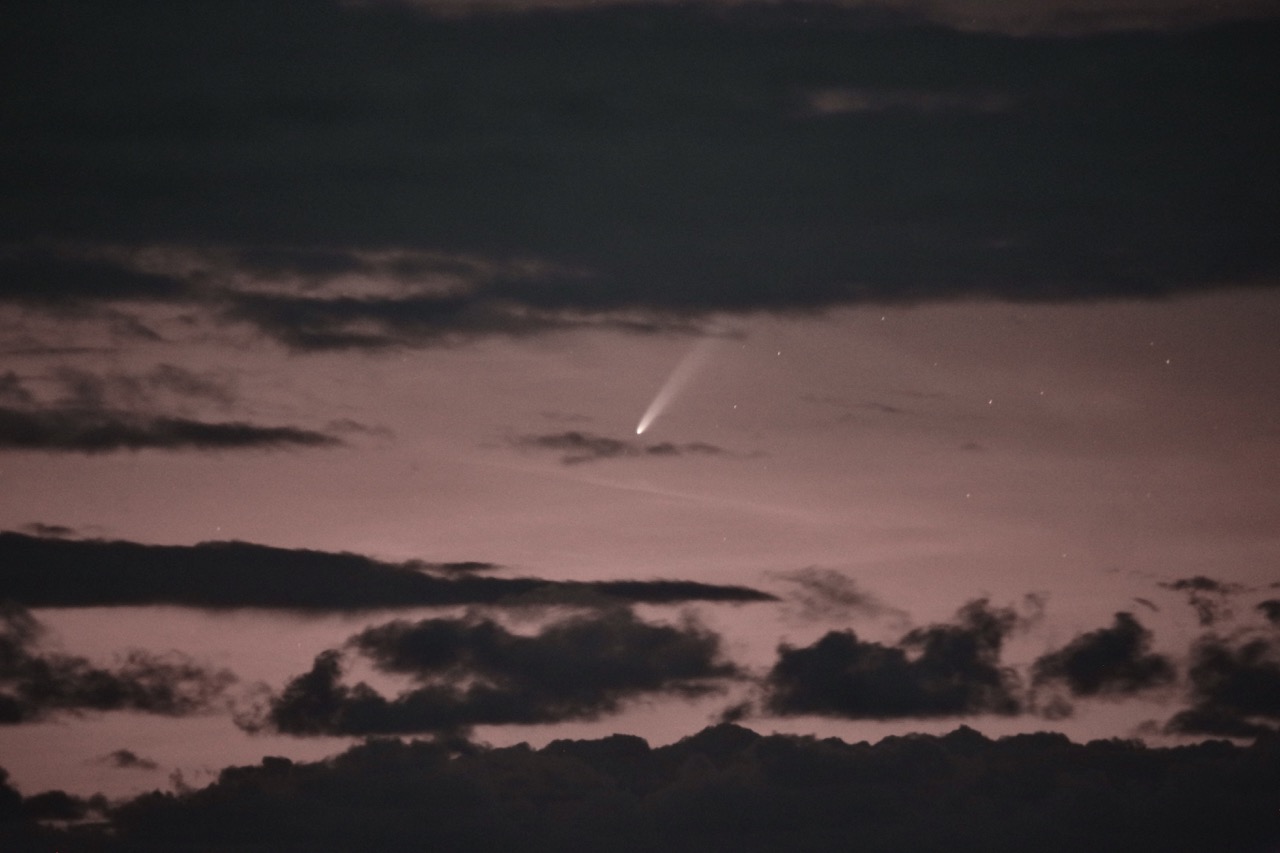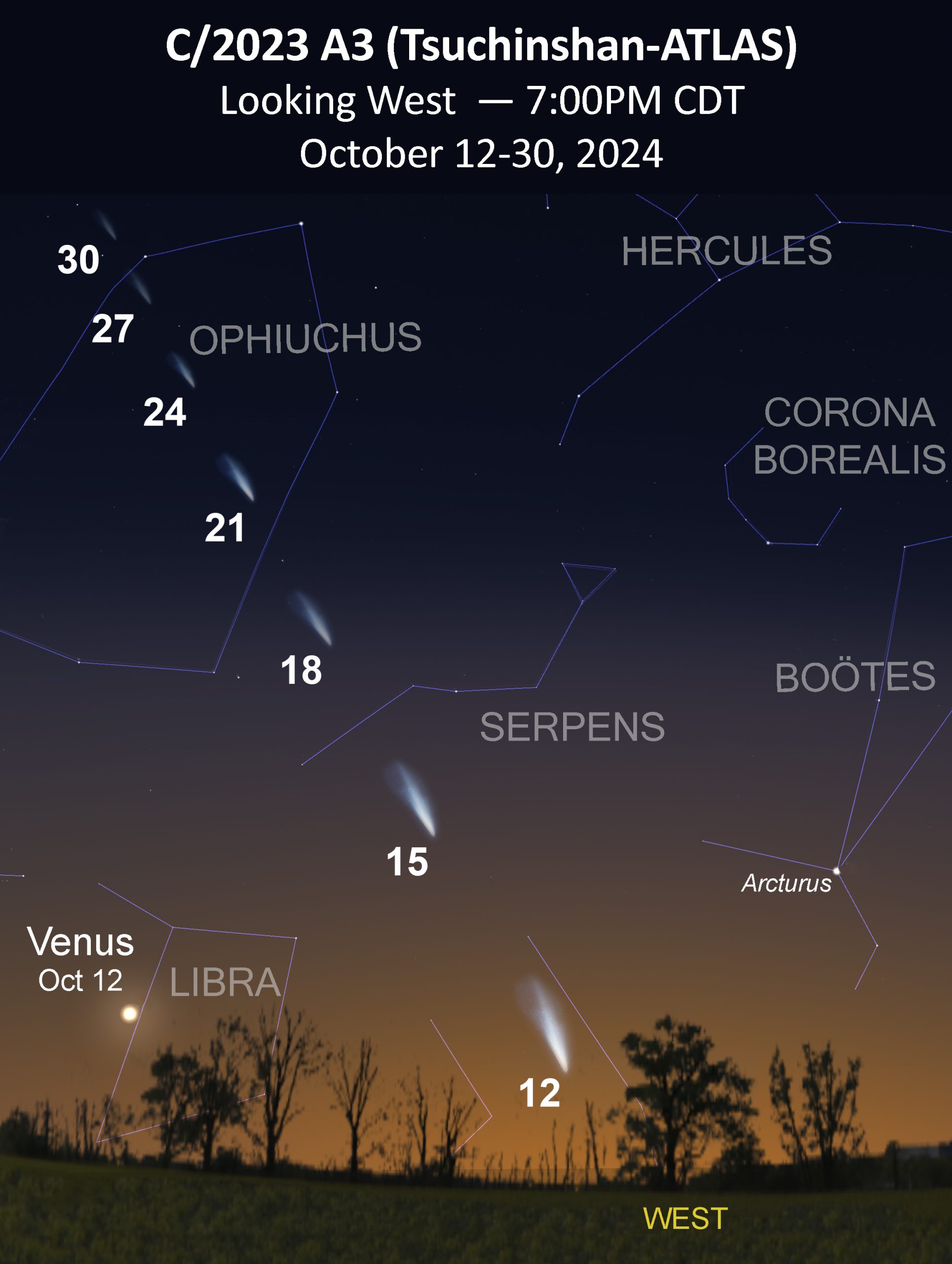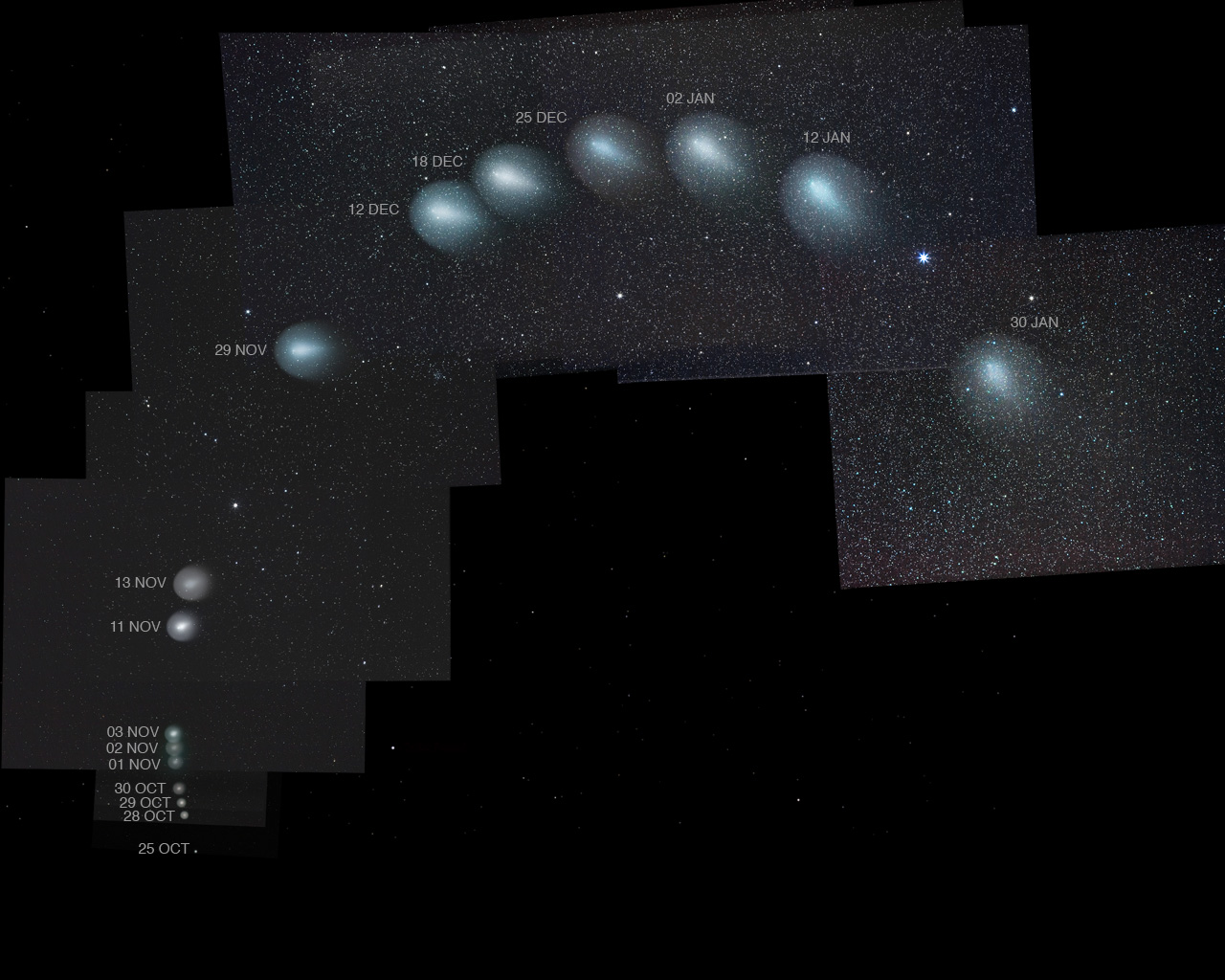
For skywatchers in the Northern Hemisphere, it often seems that spectacular comets only make their appearances in Southern Hemisphere skies. It looks like those of us in at northern latitudes are now getting our turn. Comet Tsuchinshan-ATLAS (C/2023 A3) has rapidly brightened in the morning sky, so much so that it has become visible to the naked eye in the glow of dawn. The comet, frequently known as “Comet ATLAS” or simply”A3,” reached its closest point to the Sun (perihelion) on September 27th. We will begin lose sight of it over the next ten days as it rounds the Sun; however, it will eventually become visible in the western sky just after sunset. Comet Tsuchinshan-ATLAS is expected to reach maximum brightness around October 9th; the problem is that it will appear less than four degrees from the Sun in our sky. By the next evening, though, it will have moved another four degrees farther from the Sun, increasing chances of catching a glimpse of it in the glow of dusk before it, too, dips below the horizon. Another 24 hours takes the comet another four degrees farther from the Sun. Thus, the second week of October will be a prime time to try to catch the comet while it is still near peak brightness. With each passing day the comet moves higher in our sky but farther from the tail-generating heat of our Sun.

What do you need to observe the comet? As with many celestial objects, the darker the sky is, the better the view. After October 9th, try to find a location that has a really clear view of the western horizon. Take note of exactly where you see the Sun set as this will serve as a guidepost when searching for the comet once the sky begins to darken. Binoculars will make it much easier to spot the comet against the glow of dusk and likely provide the best view with their low magnification. Though telescopes can gather more light, they typically have a narrower field of view even at low magnifications, making it harder to observe the long dust tail. Plus, it’s easier move around with a pair of binoculars around your neck than trying to lug a telescope!
Comet Tsuchinshan-ATLAS is probably making its last appearance. As it came into the solar system, it already had an extremely eccentric elliptical orbit. Gravitational interactions with the planets have likely altered its trajectory into a slightly hyperbolic orbit; as a result, the comet is now moving too fast for the Sun to be able to bring it back sometime in the future. Comets on unbound (hyperbolic) orbits only make one pass through the solar system. As a result, they have retained much of the ice and dust they initially formed from given they have spent much of their existence in the frigid depths of the outer solar system. When they pass through the inner solar system and feel the effects of the Sun’s heat, their relatively large reservoir of ice and dust (depending on the size of the comet nucleus) can create very dramatic tails. Comets on elliptical orbits, such as Halley’s Comet, are known as periodic comets and have come into the inner solar system before. Since they have already shed some of their material, they often do not put on as dramatic of a display.

As with many comets, Comet Tsuchinshan-ATLAS may bring some surprises. On September 26th, it was estimated to have a brightness of about magnitude 3, which is a level visible to the naked eye that still requires decently dark skies. It may unexpectedly brighten beyond predictions, possibly even getting bright enough to be seen in broad daylight. Comet McNaught provided a rare daylight show when it passed through in early 2007. Comets can also undergo one or more eruptions and brighten by many orders of magnitude. In late 2007, Comet Holmes brightened by a factor of a million when it underwent a large eruption, going from being a telescopic object to easily visible with the naked eye even in the moderate light pollution of suburbia! So even as Comet Tsuchinshan-ATLAS moves away from us, dimming as it goes, keep an eye on it. The best show may occur when we least expect it!
